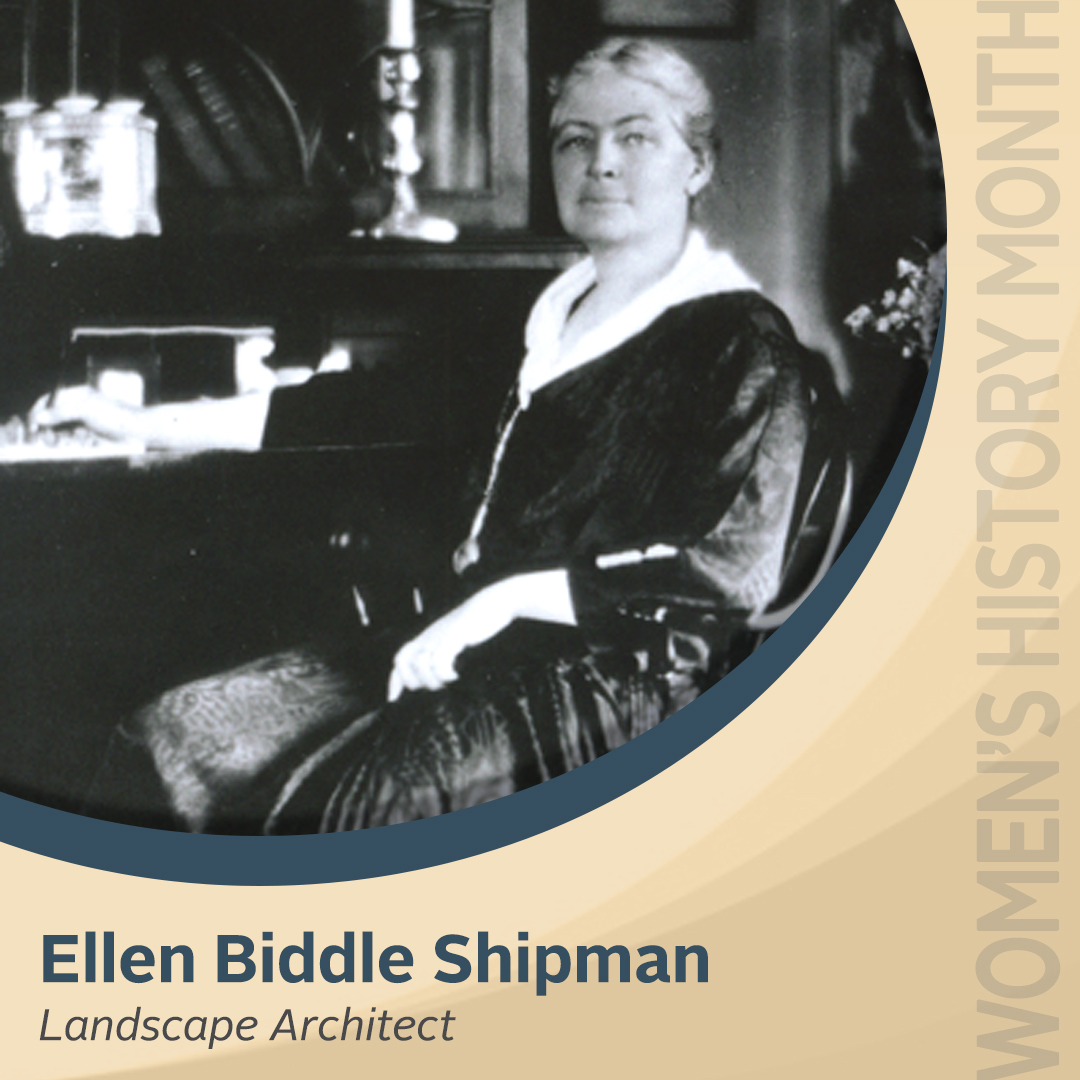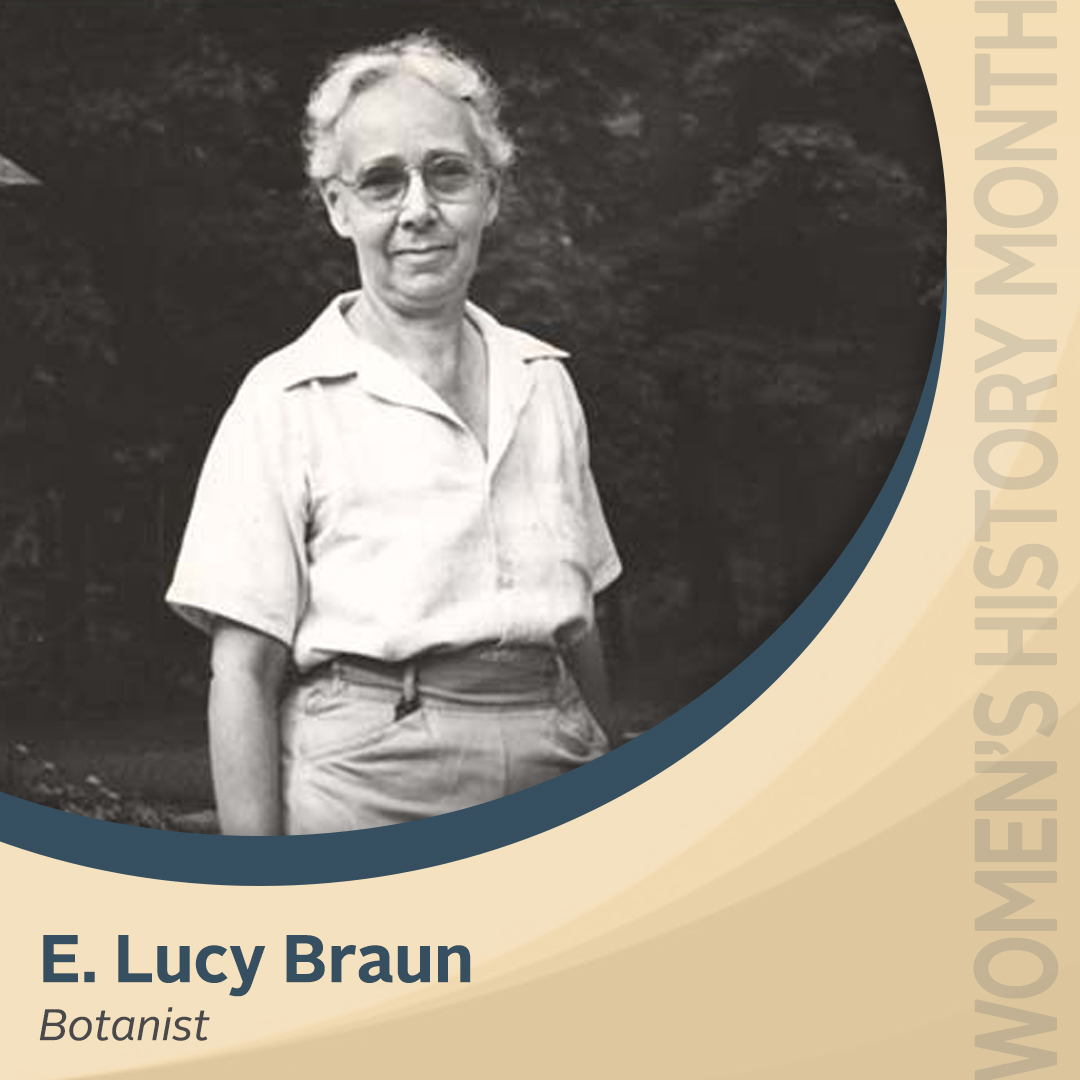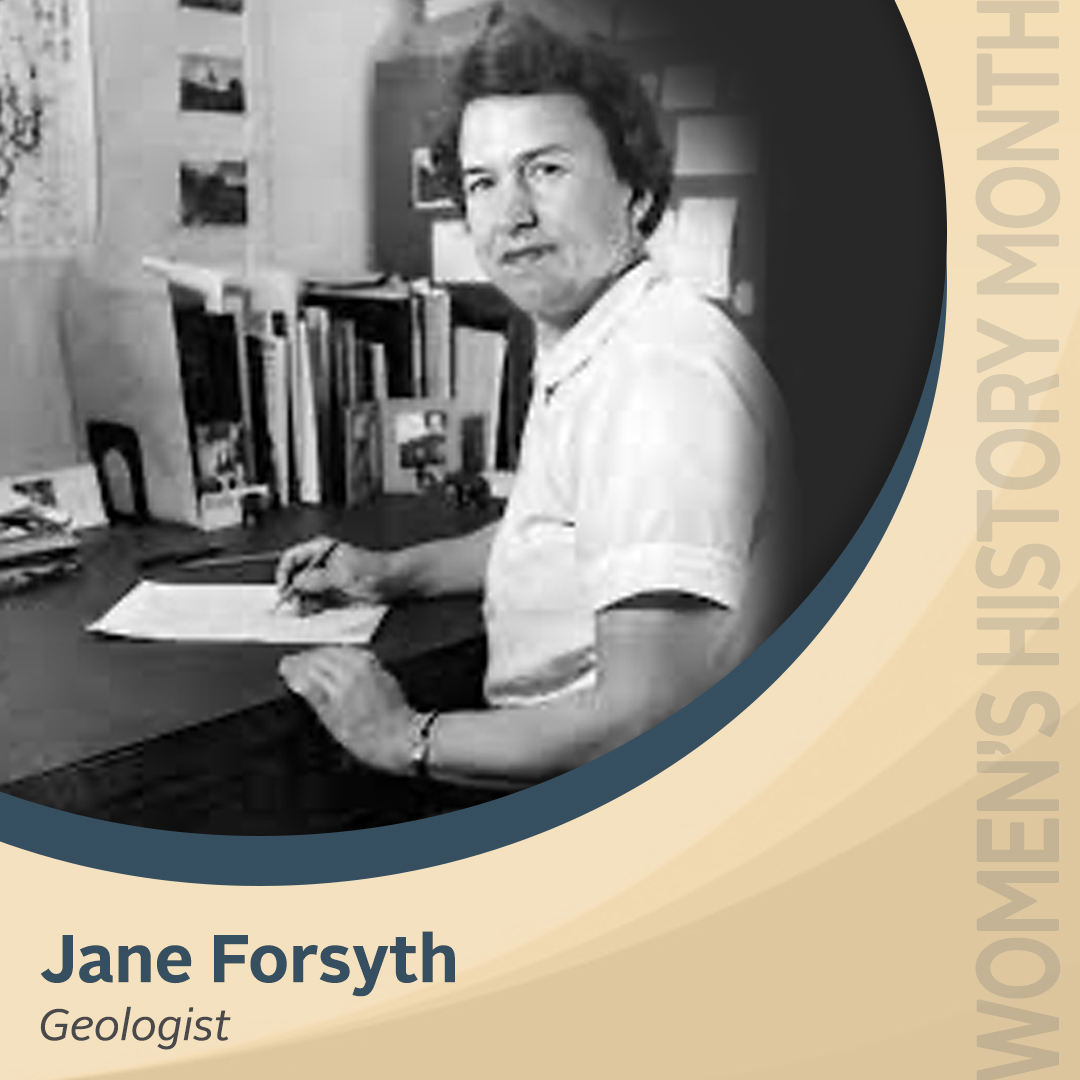Women's History Month 2024
Celebrating Women in History
As we celebrate Women’s History month, Metroparks Toledo is proud to recognize the legacy women have had on our industry. From writers, local naturalists to the most notable scientists, women have been impacting the environmental field for over a century.
By: Shannon Hughes
Outspoken, driven, intelligent—who isn’t inspired by these traits? I know I was and still am, as an historian, I have found each generation gives us woman that we can aspire to be like. Sometimes this inspiration can come later in life and you find a model to emulate once you’ve chosen your career path. For me, Ellen Biddle Shipman (1869-1950), blazed a trail in landscape architecture that to this day we still marvel over. By ‘painting the landscape with plants and flowers,’ she was able to capture the imagination of some of the most prominent families of her time. By the 1930s, she had become known as a woman pioneer in this field and called by many “the Dean of American women Landscape Architects.” Her popularity grew, as did her New York City business that employed an all-female workforce. She completed over 650 projects in her lifetime, and her designs—reflecting a unique sense of intimacy, romance and seclusion—something uniquely her style. What was also her style? Proving to everyone that a single divorced mom of three with no formal education, could handle her own in a world just beginning to let women enter the workforce. Written by, Dr. Shannon Hughes, Director of Programs at Metroparks Toledo (a divorced single mom).

By: Jessica Schafer
In light of Women’s History Month, I’ve been reflecting on the women that are part of my history. Specifically, how I was inspired to pursue a career focused on the preservation of natural places.
As a child, I loved stories set in wild places. Hatchet by Gary Paulsen, My Side of the Mountain by Jean Craighead George, and The Island of the Blue Dolphins by Scott O’Dell all fed my hungry imagination with tales of survival. But it wasn’t until high school that I picked up a book that inspired me to study wildlife biology and, later, environmental science.
In her book Shadow Mountain: A Memoir of Wolves, A Woman, and the Wild, Renée Askins details her journey from undergraduate researcher to wolf reintroduction activist. Her story is braided with philosophy and poetry, science and humanity.
It begins with her undergraduate research at Wolf Park in Indiana. Here, she was unexpectedly put in charge of raising a wolf cub named Natasha. She bonded deeply with the pup and became painfully aware of the implications of keeping wolves in captivity. When Natasha was sent to another research facility, Askins vowed to herself that she would fight for wolves in the wild. This promise would lead to the founding of the Wolf Fund, a non-profit with an unusual approach and a singular mission: To reintroduce wolves to Yellowstone National Park.
Even as a teenager, I was impressed by Askins’ fortitude. The path to wolf reintroduction was not linear and the complexities of politics and people were great. But she continually worked to make connections and find the next path forward. Her twenty-year journey concluded in 1995 when the first group of 14 wolves were released in Yellowstone. Wolf Fund celebrated by closing its doors and Askins celebrated by moving on to the next phase of her life.
Askins showed me that working for nature is about more than facts and data. To inspire conservation, you need to be able to tell the story of a place. Today, as an Outdoor Skills Interpreter for Metroparks Toledo, I live this message by connecting people to our parks. Thank you Renée Askins for inspiring me all those years ago!
To learn more about Renée Askins’ work, check out her memoir Shadow Mountain: A Memoir of Wolves, A Woman, and the Wild.
Learn more about the return of wolves to Yellowstone National Park here: https://www.nps.gov/yell/learn/nature/wolf-restoration.htm

By: Karen Menard
(Emma) Lucy Braun (1889-1971): Born in Cincinnati where her parents fostered in her a deep love of nature, Lucy Braun was considered an environmentalist even before the term was popular. Braun graduated from the University of Cincinnati in 1910, received a Master’s degree in geology by 1912 and a PhD in botany by 1914. She began her teaching career at the University of Cincinnati in 1914, finally achieving full professorship in plant ecology in 1946. Through her long and fruitful career, Braun wrote four books and 180 articles-- her most famous being Deciduous Forests of Eastern North America(1950). Her work, The Woody Plants of Ohio is still used today and considered an important contribution toward a larger project: The Vascular Flora of Ohio. A three-year grant from the National Science Foundation for this book project allowed her to travel around Ohio to collect plant specimens and obtain many high-quality illustrations. Finally, Lucy Braun was regarded as a mentor to other women in this field. Of thirteen graduate students under her guidance, nine were women, a statistic highly uncommon during her era. (https://vimeo.com/187893821)

By: Karen Menard
Jane Forsyth (1921-2006): A dynamic scientist and educator, Jane Forsyth graduated from Smith College in 1943 and embarked on a long and successful career that included working for many different colleges and institutions, including the Ohio Geographical Society, the Ohio Department of Natural Resources, and Bowling Green State University. From 1955 to 1965, Forsyth worked at the ODNR Division of Geological Survey where she mapped and studied all aspects of Ohio glacial geology and co-authored the first Glacial Map of Ohio, published in 1961. Following her work at the Survey, Forsyth became the first female geology professor at Bowling Green State University, despite the lack of opportunities given to female academics during this time. It is fitting that a full-fee scholarship at Bowling Green State University honors her legacy. As one of Ohio’s preeminent scientists, she made important discoveries about Ohio Pleistocene geology and authored over 100 scientific papers, popular articles, and abstracts. For this work, Jane Forsyth is known as “the Queen of the Pleistocene.”
